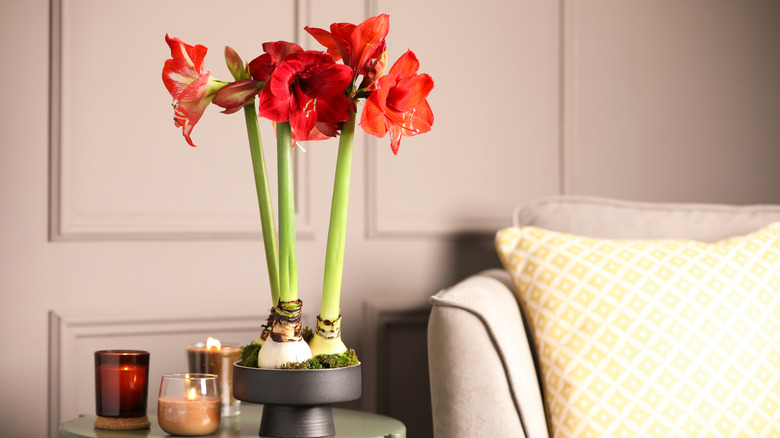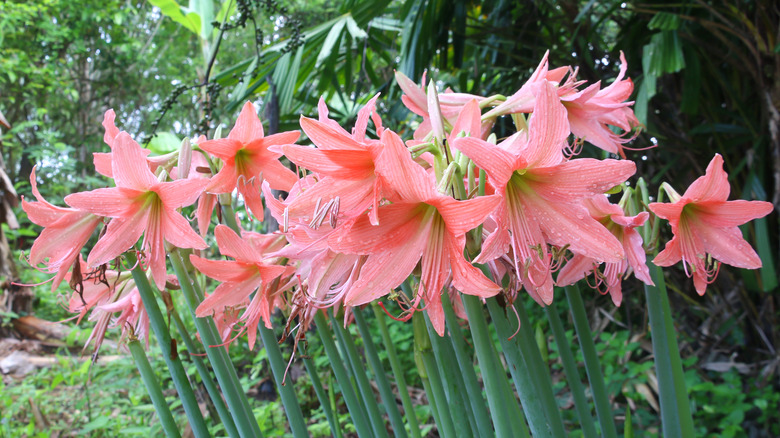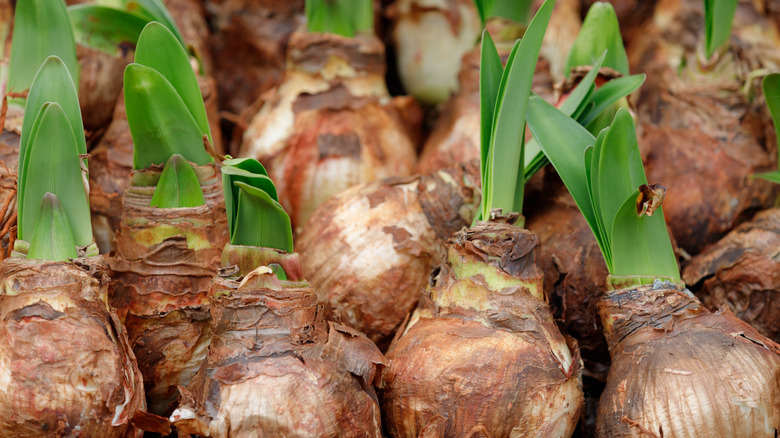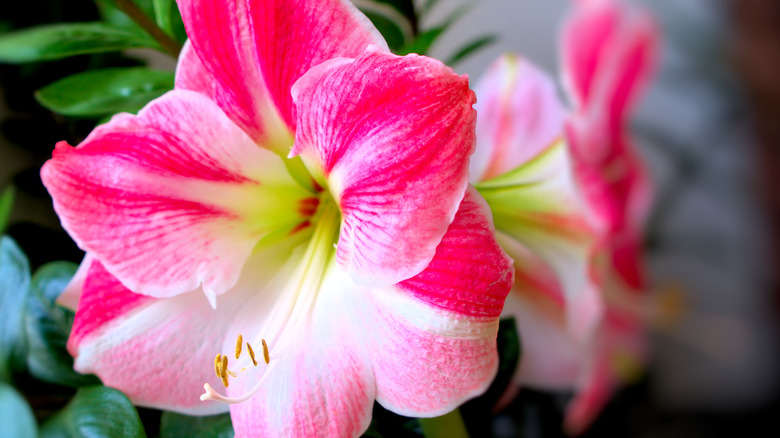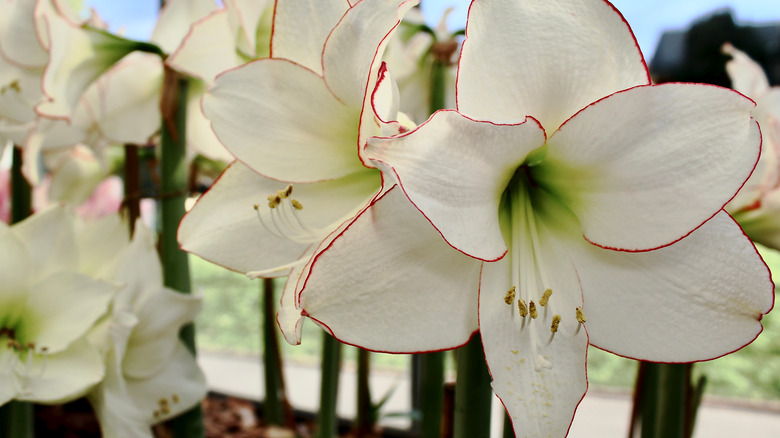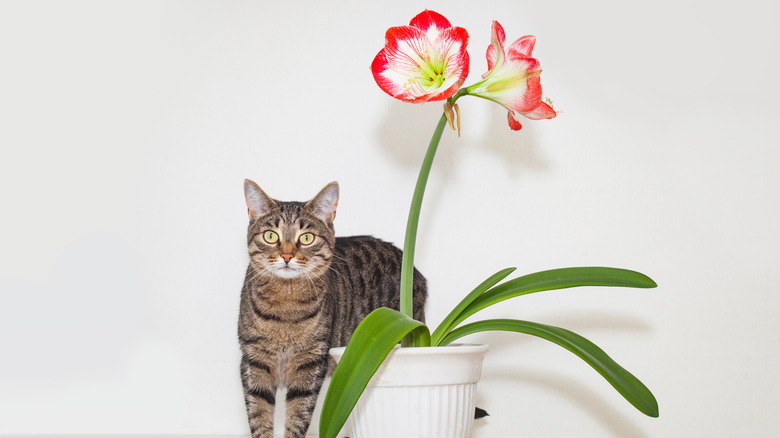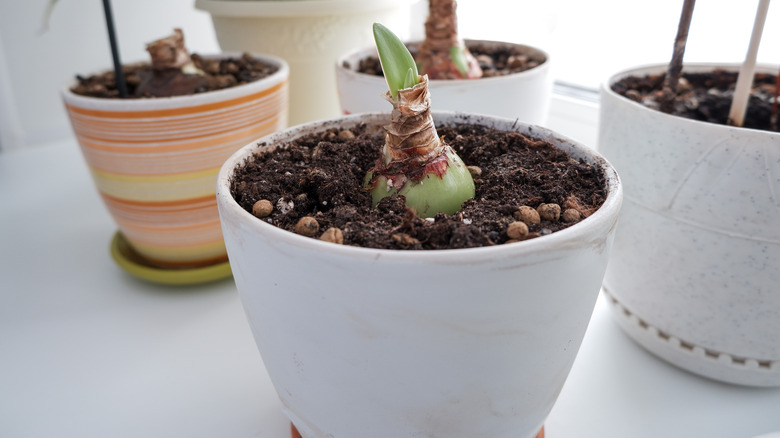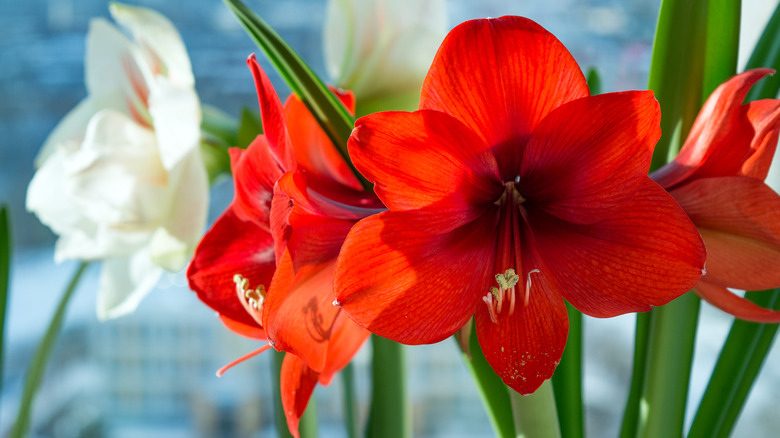Amaryllis: Everything You Should Know Before Planting
The amaryllis flower can be found blooming indoors over the holidays or lining flower beds in warmer regions of the U.S. This enchanting, bell-shaped blossom is from the Amaryllidaceae family. They come from South America and other subtropical regions, according to the University of Maryland Extension. Amaryllis, correctly referred to as Hippeastrum, is known for its large pink, red, and white flowers. Some amaryllis, such as the Fantastica, Picotee, and the Striped Amadeus show a blend of two or three of these colors. One thing is for sure, amaryllis brings exotic colors and shapes to any garden. Standing tall at 1 to 2 feet ensures they never go unseen.
Beginner and expert gardeners alike are eager to nurture this plant throughout the different seasons. Additionally, The Spruce explains that amaryllis can be manipulated to grow inside, even during the winter season. Alternatively, you can let it bloom naturally in your outdoor garden. Of course, they do need careful planning and nurturing, but with the right steps, you could have your amaryllis bloom exactly on Christmas day! Read on to learn how to do this, and more about the amaryllis plant.
How to use amaryllis in garden
Amaryllises are a great addition to any landscape looking for a bright and tropical feel. Though, they are not common outdoor garden plants unless you live in USDA zones 8 to 11, according to Gardner's Path. The southern parts of Florida, California, Texas, and Arizona are a few regions within these zones.
These incredible flowers should not be pushed to the back of your outdoor garden. They claim quite a bit of space and command attention. Many gardeners choose to welcome several bulbs of amaryllis into their landscape at once to create a larger flowering experience. Yet, just a few can be introduced as accent pieces to an already colorful garden. When using this flower outdoors, keep in mind that amaryllis cannot survive the winter in freezing temperatures. The University of Minnesota Extension suggests bringing your plant indoors in the fall to avoid the frost. You can choose to keep your amaryllis in pots at all times for an easy move.
How to grow amaryllis
Before growing an amaryllis plant you'll need to gather a couple of materials such as well-draining soil and a pot with a draining hole. You may also choose to use small garden stones to further help with draining and moss to help with soil splash back. When you are ready to plant your amaryllis, start by centering your bulb in a small hole in your well-draining soil. According to the University of Florida Gardening Solutions, only about half of your bulb should be covered by soil. Leaving the top exposed encourages early flowering.
After planting, be sure to water the soil and keep the pot in a place where it receives plenty of indirect sunlight. Once you finish each of these steps you can leave your amaryllis here until it begins to grow. This should happen in just a few weeks, as explained by The Spruce. If you are interested in propagating amaryllis, the process is easy. On a mature amaryllis bulb, you will often notice smaller side bulbs called offsets. These smaller bulbs can be cut off and planted in their own pots. However, propagated amaryllis usually need a few seasons before flowering.
How to care for amaryllis
Amaryllis is easy to care for, especially after being planted for some time. Even if you forget about it every once in a while, the plant's health is likely to stay the same. When placing your amaryllis, the first aspect you'll need to consider is lighting, says Gardening Know How. This plant prefers a mix of sunlight and shade. Sunlight encourages the flowers to bloom while the shade ensures the petals stay strong and beautiful for as long as possible.
If you plan to keep your amaryllis outdoors, their spot should also be somewhat sheltered. Unprotected amaryllis can be damaged by strong winds. Additionally, once it begins to grow, you should water its soil each time the top 2 inches become dry, says the University of Maryland Extension. Your amaryllis plant should begin sprouting leaves near the spring. This is the perfect time to feed it with fertilizer and keep it moist until it finishes flowering.
Varieties of amaryllis
Amaryllis confuses many because of its tricky history. The common "amaryllis" you find in stores isn't technically amaryllis at all. Per the University of Minnesota Extension, these amaryllises are actually Hippeastrum, a genus of nearly 100 species. Originally, amaryllis and Hippeastrum were both known as amaryllis. It wasn't until the late 1980s that the two genus were separated. Though, due to their similarities, both share a name, explains Gardener's Path. Additionally, the South and Central American Hippeastrum or amaryllis is widely known for its many beautiful varieties. The following list includes the most popular of them.
-
Amaryllis (Hippeastrum "Sweet Lilian") is a Cybister hybrid named for its similarities to lilies. The amaryllis' stems can reach up to 2 feet high featuring more than four blooms.
-
Amaryllis (Hippeastrum "Ferrari") is a Dutch variety known for its large, rich red flowers. Normally, the bulbs are over a foot wide and once they start growing they can reach up to 2 feet.
-
Amaryllis (Hippeastrum "Picotee") is a classic-looking variation of the amaryllis plant. Its stark white petals outlined in red go perfectly with all holiday décor.
-
Amaryllis (Hippeastrum Papilio) needs your patience to show you what it is worth, but you'll be glad you waited. After nine weeks they appear like butterflies from a chrysalis showing their breathtaking green, white, and magenta petals.
-
Amaryllis (Hippeastrum "Bogota") is another Cybister hybrid with long pointed petals. The gradient red flowers make it stand out even though it is smaller than others.
Is amaryllis toxic?
Amaryllis is toxic to humans if ingested. It is likely to cause an upset stomach or even vomiting. Additionally, the sap can cause skin irritation for some people, according to Children's Health Queensland. Every part of amaryllis is toxic, though consuming the bulb will cause worse effects.
Unfortunately, this plant is even more toxic to pets including cats, dogs, and horses. Ingestion of the bulb or other parts of amaryllis can lead to salivation, vomiting, and diarrhea. After eating large amounts of this plant, your pet could also experience low blood pressure, tremors, and cardiac arrhythmias, explains the ASPCA. If you have pets or young children, you will want to keep this plant well out of their reach and the spaces they frequent. If you suspect that your child or pet has ingested Amaryllis Hippeastrum, you need to contact poison control or your nearest veterinary hospital immediately.
How to repot amaryllis
Amaryllis do great as potted plants because you rarely have to repot them. According to the University of Minnesota Extension, you only need to repot this plant every three years or so. Amaryllis do their best when you plant them with a little room to grow. If your plant is beginning to outgrow its pot and it recently went through its dormant period, the time to repot is now.
The process is simple. Start by loosening the soil from the pot. You can do this by running a knife or another flat tool between the soil and the container. Once it is adequately loose, you may carefully take the entire plant out. Your new pot should be about 2 inches wider than the last. Plant your bulb and its roots into the new pot making sure the soil doesn't cover more than two-thirds of the bulb itself. Once repotted, you can care for your amaryllis as normal while waiting for its next blooms.
Getting amaryllis to bloom in the winter
One reason people love amaryllis is that you can force the festive flower to bloom during the holidays. According to The Spruce, to do this you must start by cutting back the flower immediately after it is finished blooming. After this, you should keep the soil damp until the end of summer in September. Rehome your pot in a dry area and stop watering it entirely. The leaves should have started dying by now. Let them become fully brown before removing them. Once some growth appears you will need to move your amaryllis to a window with full sunlight as soon as possible and begin to water it regularly. When some weeks pass, you will notice leaves and eventually a few blooms!
Soon, the individual flowers will start to decline. At this time, it is imperative that you cut back the flower stalks, says the University of Minnesota Extension, but not the leaves. Doing so will ensure you have a successful blooming the following year.
